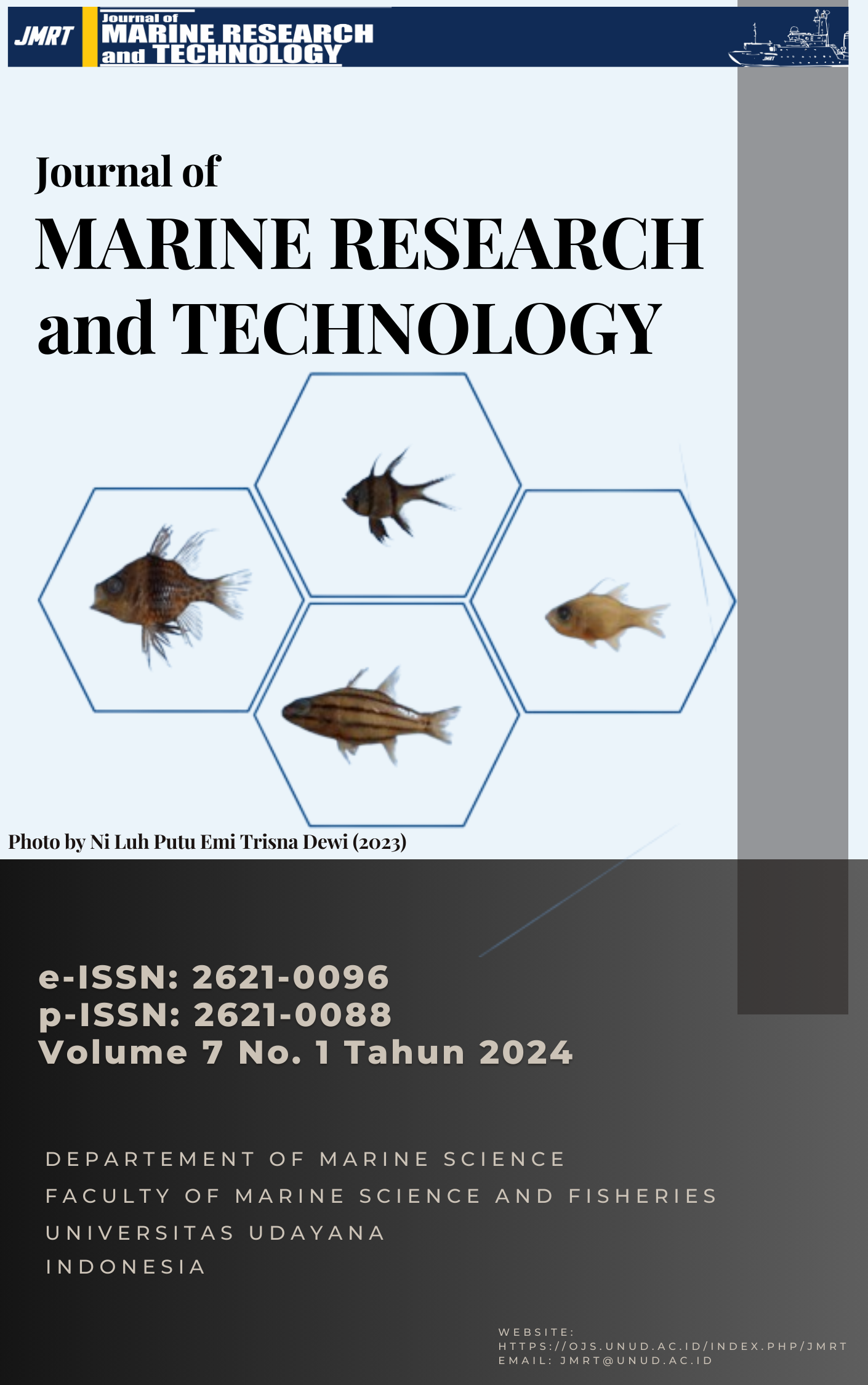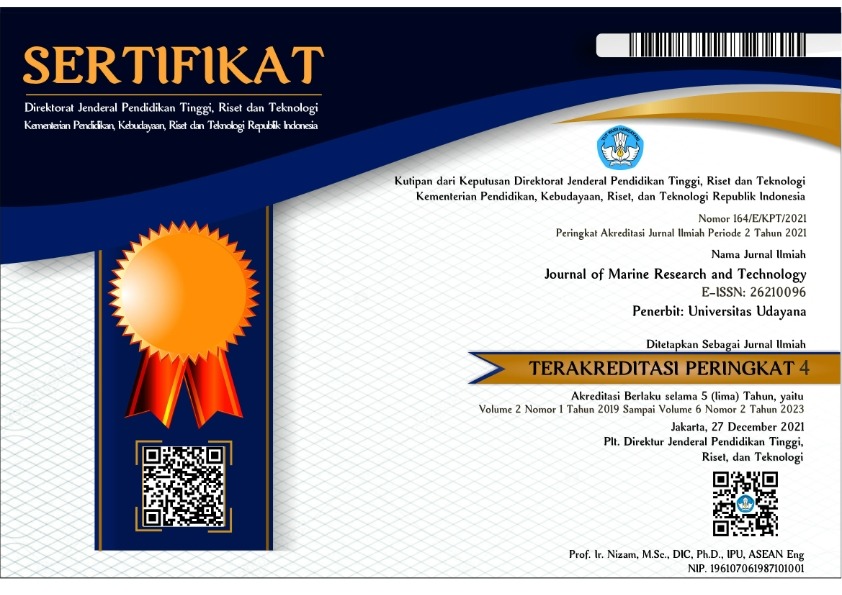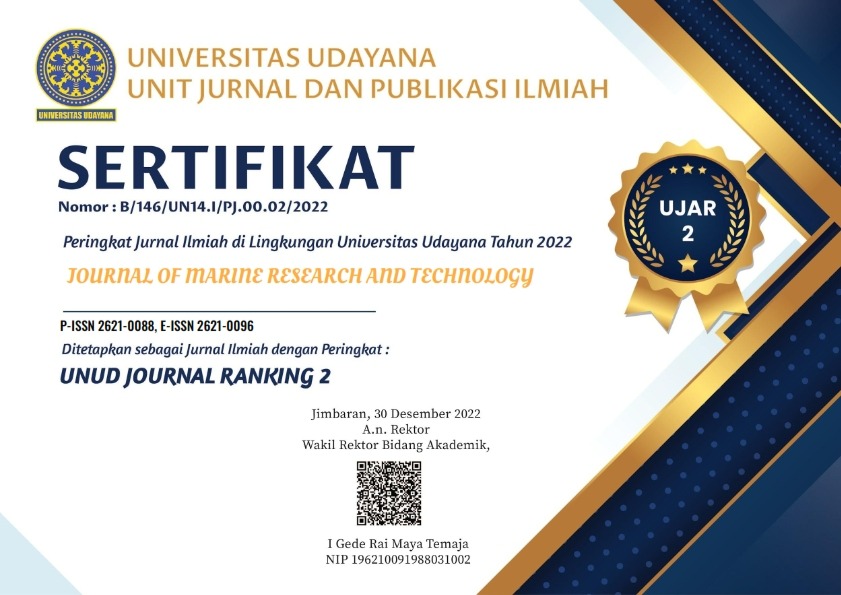Hubungan Antara Kelimpahan Ikan dengan Tutupan Lamun di Perairan Sanur, Bali
Lamun; kelimpahan; Plotosus linneatus; Sanur
Abstract
Seagrass is aquatic ecosystems that is very beneficial for marine biota. One of the functions of seagrass fields is as a place to live, shelter, and place to find food for various types of fish. The correlation between seagrass and fish is very close, this study aims to decide the association between the abundance of the fish and the coverage of seagrass cover in Sanur, Bali. Samples were taken at two stations in Sanur which represented high seagrass cover, namely Sindhu Beach, and medium cover, namely Karang Beach. Data collection on seagrass cover and types was used in a 100 m line transect. The method that is used for taking the number and type of fish is using two methods, namely underwater visual census and beach nets. The results found eight species of seagrass, including Enhalus acoroides, Thalassia hemprichii, Syringodium isoetifolium, Cymodocea serrulata, Cymodocea rotundata, Halodule uninervis, Halodule pinifolia, and Halophila ovalis. Seagrass cover on Sindhu Beach is 72.2%, and Karang Beach is 50.2%. The fish found were 1,180 individuals, including 41 species from 18 families. The greatest abundance was in Sindhu Beach, which was dominated by Plotosus linneatus from the Plotosidae family, with a relative abundance of 30%, and the lowest abundance was on Karang Beach with the Plectorhinchus vittatus from the Haemulidae family, with a relative abundance of 0,2%. Diversity is worth 2.83, Variety is 0.80, and Dominance is 0.13. The correlation between fish abundance and seagrass cover is categorized as positive with a value of 0.8924 which indicated that a high seagrass cover has a high fish abundance and vice versa.
Downloads
Copyright Notice
The copyright to this article is transferred to Journal of Marine Research and Technology (JMRT). The copyright transfer covers the exclusive right and license to reproduce, publish, distribute and archive the article in all forms and media of expression now known or developed in the future, including reprints, translations, photographic reproductions, microform, electronic form (offline, online) or any other reproductions of similar nature.






